
Secondary School Resource Pack


Secondary School Resource Pack
This Resource Pack will help you understand the choreographic processes Rafael Bonachela and Stephen Page undertook with Sydney Dance Company dancers to create Continuum. There are a range of activities for you to undertake, including reading, writing, watching, and undertaking your own creative tasks.
The pack contains a BEFORE THE SHOW section with ideas for research and discussion in the lead up to seeing Continuum and an AFTER THE SHOW section with follow-up tasks to support learning in performance, composition and appreciation. The suggested activities in the Continuum Resource Pack can be further adapted by teachers to suit the requirements of Stages 4-6 in NSW and the equivalent in other states.
Look out for the icons on each page to assist you through the range of activities. Your teacher will help guide you through the different elements of the Resource Pack and complete the tasks.
Throughout this document, you will see the following icons:
“Dance allows individuals and communities to shape their cultural identity and express their deepest feelings. These experiences continue to resonate throughout our lives, transforming our minds, bodies and souls.”
Rafael Bonachela

Dance changes you. More than simply witnessing something beautiful, or engaging with culture, to experience dance is to be positively altered. From performances at the Joyce Theatre in New York, to the Grand in Shanghai, the Stanislavsky in Moscow and the Sydney Opera House at home, Sydney Dance Company has proved that there are no passive observers in a contemporary dance audience.
The reward of truly moving audiences, and the raw pride of sharing Australian art with the world has driven our ensemble of 17 dancers, led by Artistic Director Rafael Bonachela, to become one of the world’s strongest forces in contemporary dance.
Alongside Bonachela’s original works, our programs have featured guest choreographers like Jacopo Godani, Alexander Ekman, Gideon Obarzanek and Cheng Tsung-lung, as well as collaborations with Sydney Festival, Australian Chamber Orchestra, Sydney Symphony Orchestra, David Jones and composers Bryce Dessner, Nick Wales, 48nord and the late Ezio Bosso.
In the 20th century, modern dance pioneers broke away from traditional dance styles. Instead of telling a clear story or copying expected moves, they focused on expressing ideas through movement — and you, the audience, get to decide what it means. As choreographer Merce Cunningham said, “an element itself is expressive; what it communicates is in large part determined by the observer.”
In contemporary dance, there’s no such thing as a passive audience. Sydney Dance Company’s Artistic Director Rafael Bonachela says, “you are our most important collaborator.” That means there’s no right or wrong way to watch a performance. You don’t need special knowledge or training — you just need to be open and present.
Anything can happen on stage. It’s not mainstream entertainment or fairy-tale storytelling. Instead, expect to feel something — maybe excitement, confusion, curiosity, or even discomfort. Contemporary dance often mixes art forms like technology, film, visual art, design, and fashion. It’s bold, experimental, and always changing.
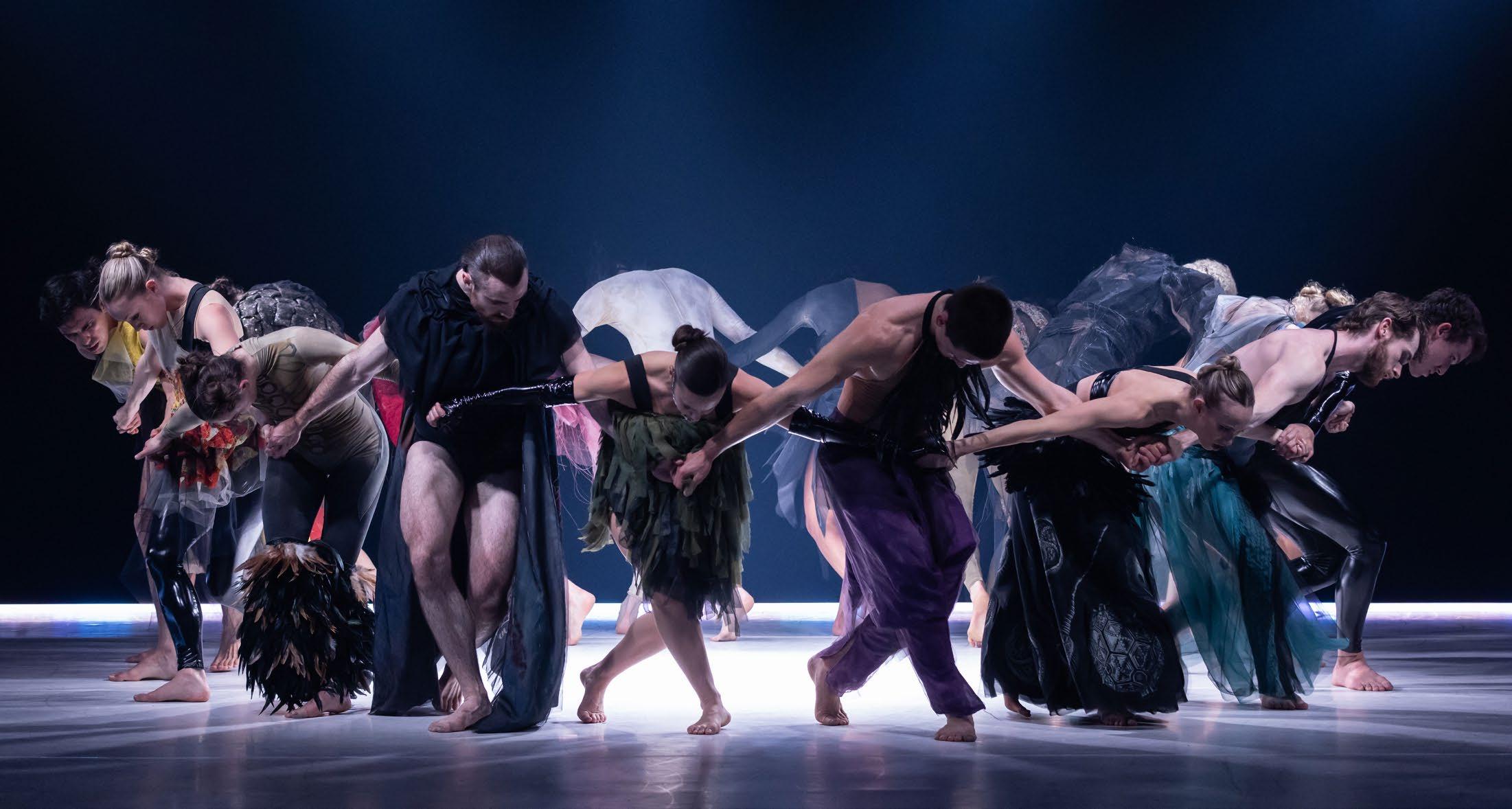

Sydney Dance Company was established in 1969, founded by dancer Suzanne Musitz. At first it was known as The Dance Company (NSW). In the mid-1970s, it was led by Dutch choreographer Jaap Flier before Australian choreographer Graeme Murphy became Artistic Director in 1976. In 1979, Murphy and his creative partner Janet Vernon renamed it Sydney Dance Company — the name it’s known by today. Together, they led the company for 30 years and helped make it famous across Australia and around the world. The company became the first western contemporary dance company to perform in China, which was a major achievement at the time.
Sydney Dance Company has been led since 2009 by Spanish-born Artistic Director Rafael Bonachela. Under his leadership, Sydney Dance Company has continued to grow and is now known as one of the most exciting and innovative contemporary dance companies in the world.
The company regularly performs new works created by Bonachela and other choreographers collaborating with designers, musicians and artists. The Company has expanded its reach into the towns and cities it visits across Australia and engaging with schools and local dancers.
Sydney Dance Company is based in the Walsh Bay Arts Precinct, near the Sydney Harbour Bridge and Opera House. The studios were purpose-built in 1986 and refurbished in 2021 to support world-class training and performances.
The studios stand on the lands and waters of the Gadigal of the Eora Nation.
We acknowledge their unbroken connection to Country and thank them for caring for this coastline for thousands of years. We pay our respects to Elders past and present, and extend that respect to all First Nations people.
Rafael Bonachela was born in Barcelona where he began his early dance training near Barcelona before moving to London. In 1992 he joined the legendary Rambert Dance Company.
He remained with Rambert as a dancer and Associate Choreographer until 2004 when he successfully set up the Bonachela Dance Company (BDC) to concentrate on the rapid rise of his choreographic career. As a choreographer, Rafael has been commissioned to make works for Dresden Frankfurt Dance Company, Candoco, George Piper Dances, ITDANSA Danza, Contemporanea de Cuba, Transitions Dance Company and Dance Works Rotterdam, amongst others.
In 2008, Bonachela premiered 360°, his first full-length production for Sydney Dance Company. Less than six months later, he was appointed Artistic Director, making headlines around the dance world. His vision for the Company embraces a guiding principle that has seen the repertoire grow, with the addition of commissioned dance works from Australian and visiting international guest choreographers. These works are often programmed alongside Rafael’s own creations, ensuring a rich diversity for audiences. It also provides opportunities for the remarkable ensemble of dancers to be exposed to the work of some of the most in- demand choreographers of our time.
Rafael Bonachela’s internationally recognized talent has seen him work not only with contemporary dance at the highest level, but also with artists from popular culture, such as Kylie Minogue, Tina Turner, Sarah Blasko and Katie Noonan, as well as leading fashion designers Bianca Spender, Dion Lee and Toni Maticevski. Such collaborative efforts reflect the inspiration he finds and utilises from contemporary culture.
You can read more of Rafael’s biography here
















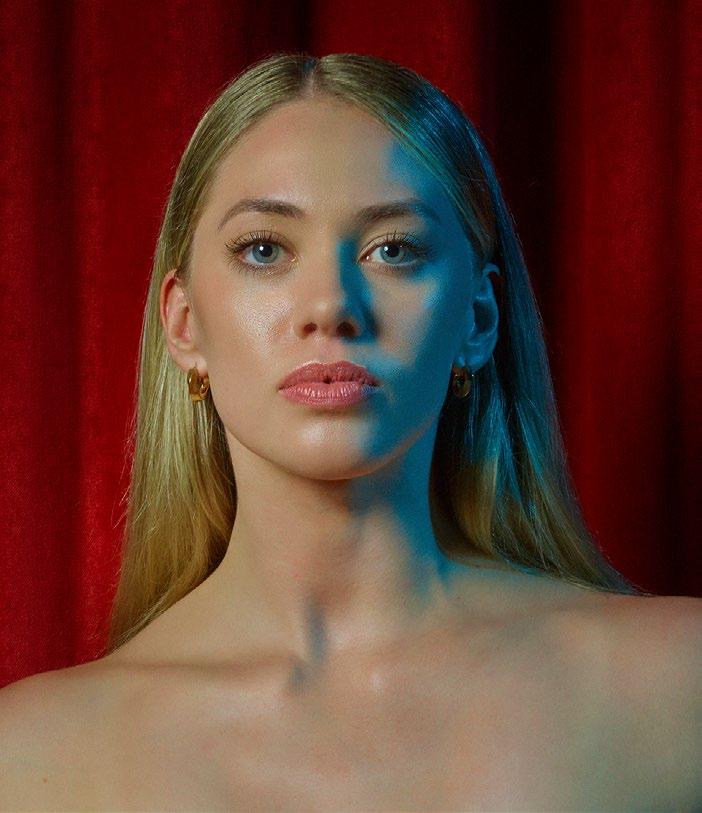



















There are many people who work with the creative team to bring dance works to the stage. The Sydney Dance Company Artistic Team who has worked on Continuum are listed below.
Richard Cilli - Rehearsal Director Mia Thompson – Rehearsal Associate
As key members of the artistic team, Richard and Mia lead rehearsals to make the performance the best it can be every performance and create the dancers’ schedule when they are in the studio and performing.
Guy Harding - Technical Director
Guy is the technical expert who supervises various aspects of Continuum like lighting and set changes throughout the work. Guy worked closely with costume and set designers Kelsey Lee and Jacob Nash to bring their vision to life, including the staging and lighting elements.
Turner
Simon communicates with the whole team to ensure the show runs smoothly, letting the dancers know when they’re needed on stage, and telling the sound engineer to start a new sound cue.
Mary-Ellen’s job is to sew the costume designer’s ideas into items of clothing, making sure the dancers costumes are comfortable to dance in, and ensuring they’re clean and mended for every performance.
Watch the Behind the Scenes: The creation of Rafael Bonachela’s Spell


Step into Spell, a daring new creation from celebrated choreographer Rafael Bonachela. This work unfolds across five distinctive worlds—five powerful “spells”—each a vivid ritual in its own right. Together, they weave a tapestry of dance alchemy, where movement transforms into something elemental, magnetic, and unforgettable.
With intricate rhythmic detail and fearless technicality, Rafael’s signature choreographic style pushes boundaries, reaching new heights of precision, passion, and physical intensity. Every gesture feels both meticulously crafted and viscerally alive, pulling audiences into a heightened sensory state.
The work is set to a powerful score featuring compositions by Ólafur Arnalds, Bryce Dessner, and Alice Smith—music that ranges from hauntingly fragile to exhilaratingly full-bodied. Coupled with Kelsey Lee’s striking design and Damien Cooper’s sculptural lighting, Spell immerses the dancers in shifting landscapes of colour, shadow, and sound. The stage becomes a living, breathing canvas where each spell conjures a distinct mood and emotional resonance.
At its core, Spell is an invitation: to witness dance not only as performance but as a potent, primal force—an experience that transcends language, reaching deep into the body and spirit.
A note from the choreographer Rafael Bonachela
I found myself at an event last year, where I heard the inimitable Alice Smith sing her cover of I put a Spell on you. It is a haunting performance that feels like a hypnotic love, a longing, on the brink of obsession. There is raw emotional power and a trance-like quality to the song that adds new perspective and depth into the lyrics. I was eager to explore how this feeling, and the idea of a spell as a transformation could be conveyed through dance.
Music guided me in every aspect of this work. From Alice Smith’s singular cover to a choral arrangement of Momentary by Olafur Arnalds, and a suite of three songs for solo violin by Bryce Dessner that allows us to oscillate between movement and stillness. I was drawn to building elements of compression and release within the choreography to build a series of dances that are ‘spells’.
We started working on Spell in July 2025, at the artist retreat Orsolina28 Art Foundation. To be building this world in one of the most magical
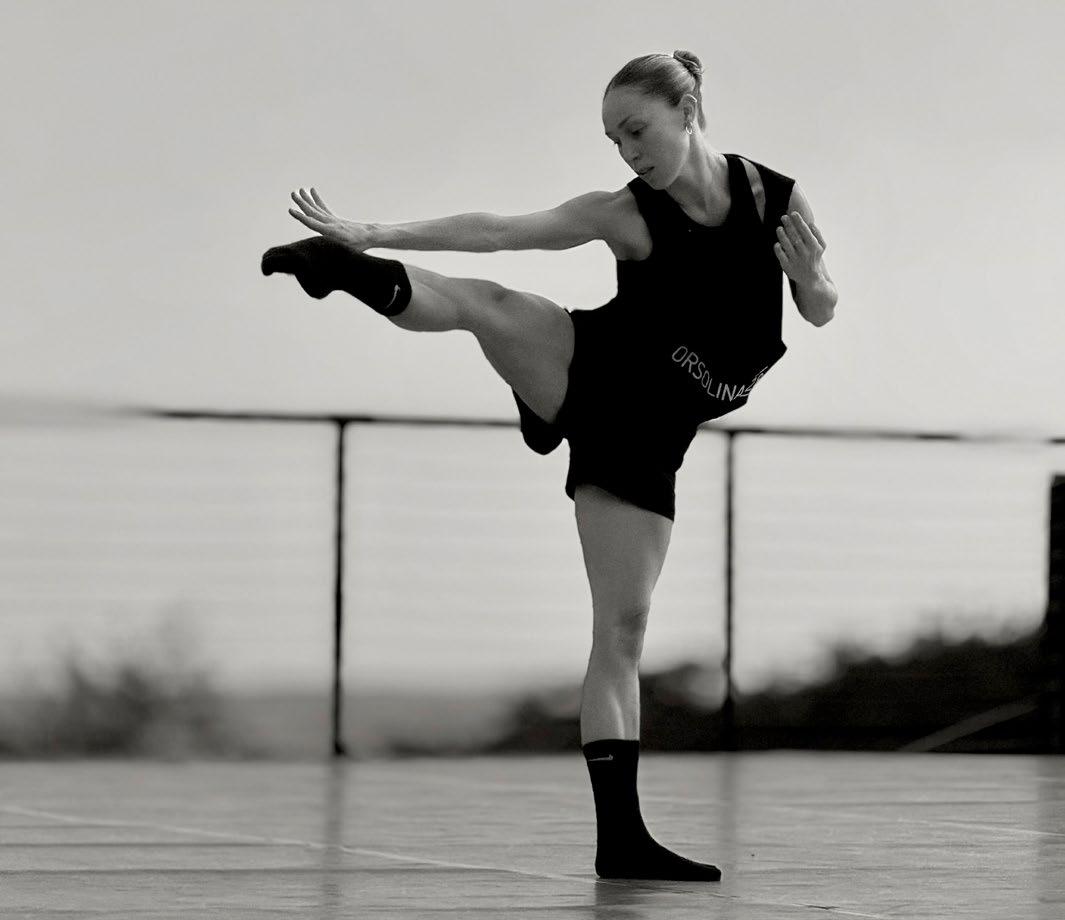
places I’ve ever experienced was a true gift. Orsolina28 feels designed to nurture creativity — the natural beauty, the light, the stillness — everything invites you to slow down and connect more deeply, not only with the work but with yourself. Our time there was incredibly special. The residency gave us a rare sense of space, both physical and mental, that allowed us to immerse fully in the process with focus, clarity, and freedom. Bryce Dessner was also able to join us there and the texture of his music always provides so many different cues to weave into. It’s a pleasure to include his compositions in this work.
Being back in Australia, it’s a joy to continue to build this work with our incredible dancers, who are always up for pushing new heights of technicality and power, creating liminal, hypnotic moments throughout this work.
I so enjoy working with Kelsey Lee and collaborating again in Spell is very special. Lee’s stage design opens portals between the spells, guiding the audience through contrasting dimensions. Each of the five spells has its own atmosphere, and her visual language allows those worlds to emerge and dissolve before the audience’s eyes. Her costumes offer a beautiful, thoughtful and evocative simplicity that give a perfect balance to the highly technical choreography.
And of course, my long-term collaborator, Damien Cooper, whose lighting always takes my work to new places, adding a layer of emotional mystique that really sings.
I am so excited for you to see Spell and hope you enjoy each moment.
Damien Cooper works internationally across theatre, opera and dance. Damien’s dance credits for Sydney Dance Company include Somos, Ascent, Resound, ab [intra], Impermanence, Cinco, Ocho, Grand, Air and Other Invisible Forces, Orb, momenta and Love Lock.
Other dance credits include; State (Western Australian Ballet), Of Earth and Sky (Bangarra), The Narrative of Nothing, Firebird and Swan Lake (Australian Ballet), Giselle (Universal Ballet), Birdbrain, Supernature, Habitus and Be Yourself (Australian Dance Theatre), The Frock (Ten days on the Island Festival), Affinity (Tas Dance), Mortal Engine (Chunky Move) and Grey Rhino (Performing Lines). Other theatre credits include Edinburgh International Festival, Belvoir, Sydney Theatre Company, Opera Australia, Houston Grand Opera, Canadian Opera and Lyric Opera Chicago.
For lighting design, Damien has won three Sydney Theatre Awards, four Green Room Awards, and two Australian Production Design Guild Awards.
Watch an insight to Rafael Bonachela’s creative process in the studio

Five moments of magic! Unique, individual, spell binding. Magic is unique on stage, contrasting between gentle stillness and darkness all the way through to TAA DAA moments. Thrilled to have joined Rafael and Kelsey in creating this beautiful journey. Enjoy!


Kelsey is a Sydney based lighting, set and costume designer. Her work is primarily created for live performance, including theatre, dance and events, for mainstage and independent companies.
Her designs fuse lighting, set and costumes and aim to explore scenography through the sculpting of architecture and space to tell a story. She is highly collaborative as a designer, working closely with the creative team to develop the vision of the show.
Kelsey is a graduate of the National Institute of Dramatic Art (Design for Performance), and is the first person to have solely designed the set, lighting, props and costume for her graduating show.
Kelsey has received a Sydney Theatre Award for her work as the Co-Designer on Destroy, She Said, and has been nominated another two times for lighting design.
A note from the Costume and Set Designer
Spell is a collection of images, intended to charm us as the viewer with each one. The music is incredibly provocative, so much so that the space evolves with every track. In collaboration with Rafael, and lighting designer Damien Cooper, we have explored the elasticity of the space, having moments of great expanse and moments of great intimacy. How could we make every image simple and beautiful and surprising and powerful? The space engages with and reflects the incredible dancers performing Rafael’s magnetic and raw choreography, at times as one, at other times as an external force. The costumes also needed to be a Spell of their own. The palette in itself is quite enchanting. At every point the design aims to reflect the elegance and beauty of the music, the rawness and power of the choreography. Enjoy, and allow yourself to be charmed and moved by this beautiful piece.

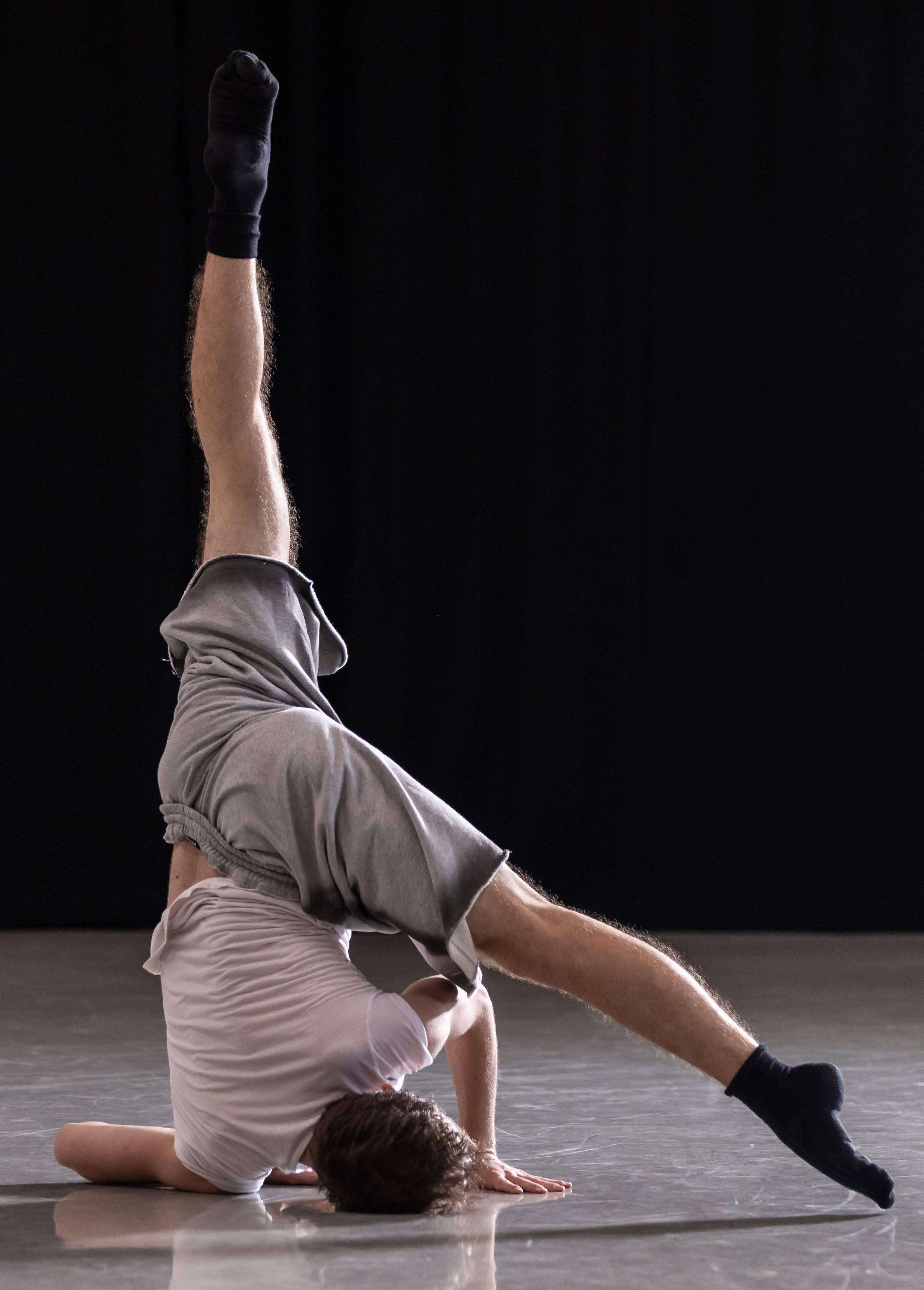
When we dance, we aren’t just moving our bodies—we’re sharing ideas, expressing ourselves, and learning from each other. To do this well, it’s important that everyone in the room feels safe, supported, and free to explore new movements. A safe and creative space allows us to try out new ideas, take risks, and be adventurous with our dancing—without worrying about being judged. It also helps us work together as a team and enjoy the process of making dance.
At Sydney Dance Company, we focus on key values that help us build this kind of positive space:
• Safety – looking after ourselves and each other while we move. This includes using our bodies carefully, being aware of the space around us, and asking for help if we need it.
• Respect – listening to each other’s ideas, giving everyone a turn, and treating others the way we want to be treated. Respect also means valuing everyone’s creativity, even if it’s different from our own.
• Commitment – trying our best, even when something feels new or a bit tricky. Commitment means showing up fully, focusing on the activity, and being willing to push yourself a little.
• Kindness – encouraging each other, using positive words, and celebrating the effort everyone puts in. A kind environment helps everyone feel confident to try new things.
• Communication – sharing ideas clearly, asking questions, and giving helpful feedback. Good communication helps the group work together and creates stronger dance ideas.
Our Class Values
Discussion questions:
1. What other values do you think are important when we are creating and moving together?
2. Are there any values on the list—Safety, Respect, Commitment, Kindness, Communication—that you would change, add to, or think about differently?
3. Can you think of other ways we can make our dance space safe, welcoming, and creative for everyone?
Part A: Creative task
– “No bones” / boneless as stimulus
During the creative process of Spell, choreographer Rafael Bonachela worked collaboratively with the dancers, using a range of creative tasks and choreographic approaches to develop new movement ideas. One duet in Spell grew out of a creative task where the dancers explored moving as though their bodies were completely “boneless.” This stimulus encouraged the dancers to imagine their bodies with no structure, creating fluid, unusual, and surprising movement that became the foundation for the choreography of the duet.
Aim
To explore movement that feels fluid, weighty, and relaxed by imagining the body has “no bones.” You will experiment with giving the weight of your bones to gravity and moving with a floppy, jelly-like quality.
You can use Sydney Dance Company’s Spotify improvisation playlist for music support. Click here to listen to Spotify playlist.
Improvisation and exploration
• Shake it out – Start with small shakes in the hands, arms, legs, and shoulders. Gradually let these shakes travel through the body until you feel completely loose.
• Contrast – Freeze suddenly in a rigid pose, then release into boneless, floppy movement. Repeat several times to exaggerate the difference between tension and relaxation.
Creative tasking
Individual body parts
• Begin with one part of the body (hand, foot, head, torso).
• Imagine it has no bones – it wiggles, flops, or swings.
• Add more body parts one at a time until your whole body appears boneless.
• Experiment with different speeds: slow, syrupy movement vs. quick, floppy shakes.
• Start with your entire body stiff, moving robotically.
• Gradually release each body part, letting it melt into boneless flow.
• Think of melting ice or a puppet with its strings cut.
Floating through space
• Imagine your body is light and floating through water or air.
• Move across the room with minimal effort, letting your body sway and drift.
• Respond to other dancers by flowing around, past, or with them without resistance.
Levels and directions
• Explore boneless movement on the floor, kneeling, standing, and jumping.
• Let gravity pull you down, then find ways to “re-inflate” and rise back up loosely.
• Change direction suddenly – can you flop into a turn or roll?
Aim
To create a short movement phrase inspired by the “No Bones” movement exploration in Part A. Show contrast between stiffness and bone-lessness, and develop choreographic ideas into a structured phrase.
Reflection questions:
1. How did you use contrast between stiff and boneless qualities in your phrase?
2. Which choreographic devices helped to make your phrase more interesting?
3. How does your final phrase communicate the idea of transformation?
seconds)
• Using movement from your creative exploration, find a clear journey from stiffness to bone-lessness, then choose your resolution:
» Return to stiffness,
» Remain fully boneless, or
» Find a balance between both states.
• Use levels (floor, mid, standing) and pathways (curved, straight, zig-zag) to make your phrase more dynamic.
• Consider the expression in your face and body: tight, sharp features when stiff → soft, loose expression when boneless.
• Start by creating and performing your own solo phrase.
• Then, work together to find moments where you can:
» Gradually exchange qualities – one stiff, one boneless, then swap.
» Mirror - each other’s movement in different states (one floppy, one rigid).
» Contrast – perform opposing qualities at the same time.
» Overlap or connect – one dancer melts into bone-lessness while another resists.
• Use choreographic devices such as:
» Canon: dancers perform the same movement one after another.
» Unison: dancers perform the same movement together.
» Repetition: repeat a key movement for emphasis.
» Variation: change speed, direction, or dynamics of a shared movement.
Unungkati Yantatja – one with the other is an exciting collaboration between two incredible First Nations artists: Stephen Page, one of Australia’s most celebrated choreographers, and William Barton, a world-renowned composer and yidaki player.
In this world-premiere work, Stephen Page’s choreography brings William Barton’s music to life, creating a powerful connection between the movements of the dancers and the sounds of the yidaki. Together, they explore the natural world—the land, the sea, the sky, and all living creatures—inviting us to reflect on our place within it and the spirit of creation that surrounds us.
The music is performed live on-stage by William Barton and the award-winning Omega Ensemble, who commissioned and helped bring William Barton’s original score to life. This piece is a celebration of breath, the rhythm that connects all living things. Watching and listening, we are reminded of how we are connected to Country, to one another, and to the ongoing rhythm of life.
Unungkati Yantatja – one with the other is not just a performance, it is an experience that lets us feel the power of music, movement, and connection in a deeply moving way.
Unungkati Yantatja, meaning “one with the other” in the Kalkadunga language spoken by William Barton’s father, was chosen as the title by composer and yidaki player William Barton in collaboration with choreographer Stephen Page. They wanted a name that reflected how the music and dance work together, inspired by William’s songlines and the musical stories he creates with the yidaki.
For this new work, the music was made even richer by Omega Ensemble, which adds the bass clarinet and string instruments alongside the yidaki. Both the yidaki and the clarinet use a technique called circular breathing, which allows them to keep a note going without stopping, almost like the wind blowing endlessly.
In the storytelling told through the performance, the wind and the yidaki (stick) are like two powerful forces. When they come together – one with the other – they spark the fire, showing how different elements can join to create something strong and beautiful.
with the other and venture behind-the-scenes as Stephen and the dancers create the work


Music Composer, William Barton holding a yidaki

A yidaki, also known as a didgeridoo, is a traditional Aboriginal instrument originating from northern parts of Australia and has been culturally shared and traded across First Nations Countries. Its sound is considered a form of speaking, expressing unique languages and meaning across different communities.
Traditionally, a yidaki is crafted from eucalyptus branches naturally hollowed by termites. The exterior is often decorated with ochre or patterned designs, with styles and motifs varying across First Nations Countries. When played, it produces a deep, buzzing sound. Players use a special skill called circular breathing, which means they can keep the sound going without stopping to take a breath.
There are many traditional playing techniques, and today the yidaki’s sound can also be adapted into contemporary and musical styles. The yidaki is not just for making music; it holds significance in ceremonies, storytelling, and cultural traditions.
Aboriginal and Torres Strait Islander Storytelling Aboriginal and Torres Strait Islander storytelling is an important tradition for First Nations Australians. Stories are shared through speaking, songs, dance, and art, and they pass down knowledge, history, and beliefs.
Many stories come from songlines of the natural world which explains how the animals, people and culture were created.
Storytelling teaches lessons to younger generations, keeps culture and traditions strong, builds identity and connection to the land and sea, and supports pride and wellbeing in First Nations cultures.
Kalkadunga Country, also known as Kalkatungu or Kalkadoon Country, refers to the traditional lands of the Kalkadoon people, located in the Mount Isa region of Queensland, Australia. It encompasses a vast area, stretching west from Cloncurry to Mount Isa, south to Duchess and the Selwyn Range, and north to Glenroy.
The Kalkadoon people have a rich cultural history and are known for their strong connection to their land and their resistance against early colonial settlement.
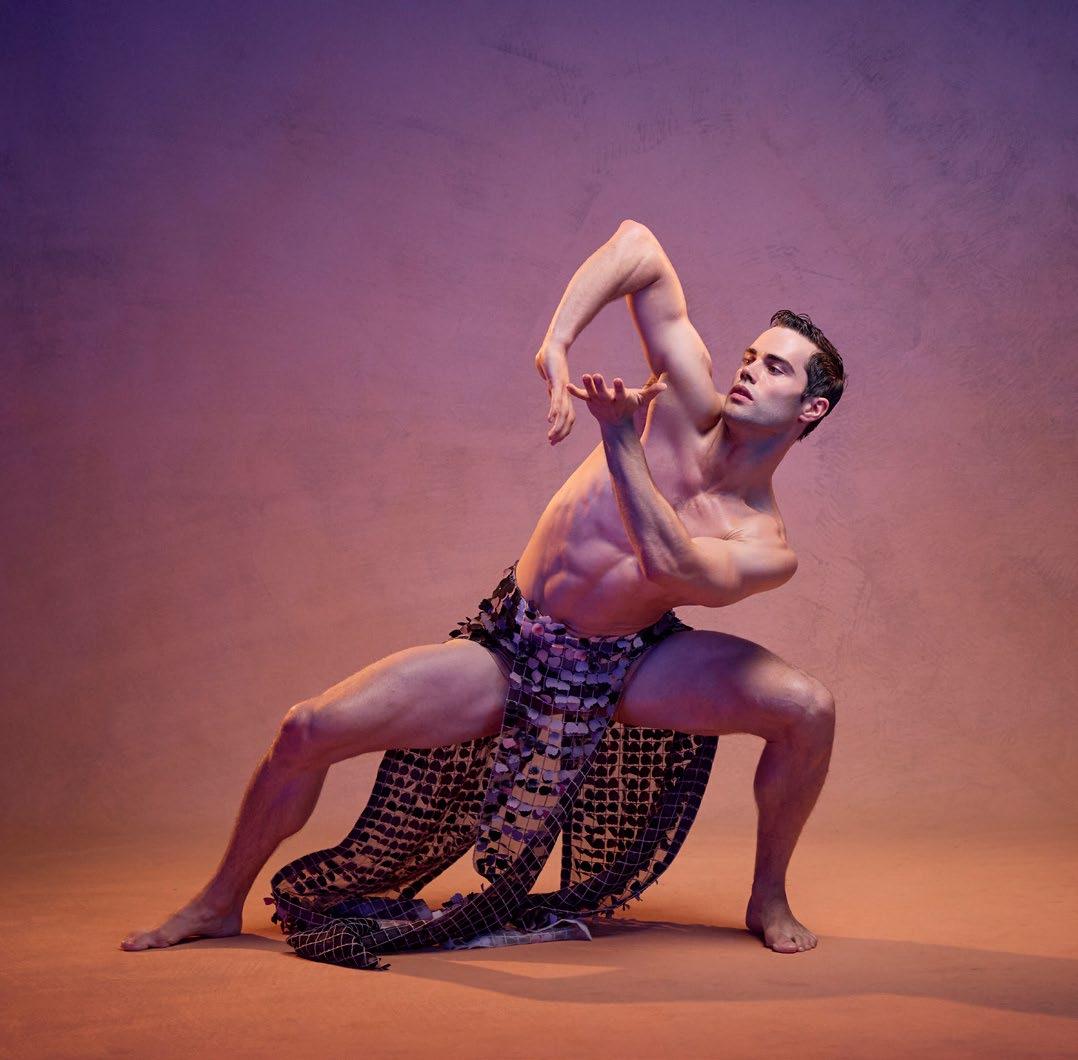
Meet the music composer - William Barton
William Barton is one of Australia’s most celebrated musicians – a world-renowned yidaki virtuoso, composer, and cross-cultural storyteller whose music transcends genres and borders. Born in Mount Isa, Queensland, William is a proud Kalkadungu man who first learned the yidaki from his uncle, Elder Arthur Peterson. Encouraged by his mother, celebrated opera singer and poet Aunty Delmae Barton, William developed his deep musical roots in culture and Country.
He now blends these traditions with global concert forms. William has performed with the Berlin Philharmonic, London Philharmonic, Australian Chamber Orchestra, and every major Australian symphony orchestra. His collaborators include Paul Grabowsky, Deborah Cheetham Fraillon, Kate Miller-Heidke, the Brodsky Quartet, and Herbie Hancock.
William has featured at globally significant events such as the Opening Ceremony of the 2008 Beijing Olympics, ANZAC Cove commemorations, Commonwealth Day at Westminster Abbey, the 2018 Commonwealth Games Opening and Closing Ceremonies in Brisbane, and International Jazz Day. He regularly appears at the Sydney Opera House and in major festivals around the world.
William frequently collaborates with Aunty Delmae Barton and violinist Véronique Serret in the award-winning works Heartland, Kalkadungu, and Apii Thafini Mu Murtu. He continues to push the boundaries of sound and storytelling.
He serves on the board of the Sydney Symphony Orchestra and is a member of the Australia Council for the Arts. William holds honorary doctorates from the University of Sydney and Griffith University and has received numerous awards including the ARIA Award for Best Classical Album, the Don Banks Music Award, and the Richard Gill Award.
A modern-day songman grounded in ancient traditions, William continues to shape the future of Australian music. Through the resonance of the yidaki, his voice speaks across cultures — challenging, healing, and transforming the spaces in which it sounds.

William joins Sydney Dance Company for Unungkati Yantatja – one with the other in the Continuum season, a collaboration with choreographer Stephen Page and the awardwinning Omega Ensemble, who will perform William’s moving commissioned score live on stage with him.
A note from William Barton about the musical score
“The awakening moments of the dawning of time, sunlight reflective upon the great southern land.
The wind gently travels across the earth and rises to the sky, sharing the journey with the eagleinhaling and exhaling with our first breaths of life.
From the distance the rivers of our bloodlines of mother country become ever so present, we realise from the eagles view we are connected as one humanity.
A dedication to the memory of one’s breath, the first breath we take as we are born into this world, and the last taken. Breath is the rhythm we breathe as our heartbeat pulsates throughout our body - our breath is our connection to one another.
Each musician becomes the breath for one another - exchanging energy. As our earthly horizon arcs to a peak in the sky we breathewe breathe for the memory - we breathe for our loved ones.
An interpretation of the bushland coming to life as the earth shimmers a new day born - each instrument becomes the elements of nature - a rhythmical flow of life, we breathe within, together as a symbol of unity - the importance of language passed on to generation after generation
The dust spirits dance upon rocky outcrops, jagged and sharp pointed spinifex grass whistle as the wind travels.
The opening section is reflective, the voice forms a pathway with each musician to cross paths creating energy to breathe for others.
As we travel the life’s circle of light we embrace each other’s breath to a new memory born.
A silhouette of the rocky outcrops grow closer to the stars as the glow of the moon shines on the wings of the eagle.
All instruments morph into timelessness a place of rebirth renewal hope and our breath.
As the canvas of our landscape paints the night sky we find ourselves awakening to the new day born.
To the end May we share the memory of this breath together.”
- William Barton (January 2022)
Omega Ensemble champions extraordinary musical talent through high-energy and impactful performance.
With a commitment to cherish foundational classical music repertoire, the Ensemble also proudly stands at the forefront of new musical expression, collaborating with leading Australian and international composers and placing groundbreaking world premiere music at the centre of its projects.
The ensemble has received multiple accolades, including Performance of the Year (2023) and the National Luminary Award for Excellence (2024) at the APRA AMCOS Art Music Awards.
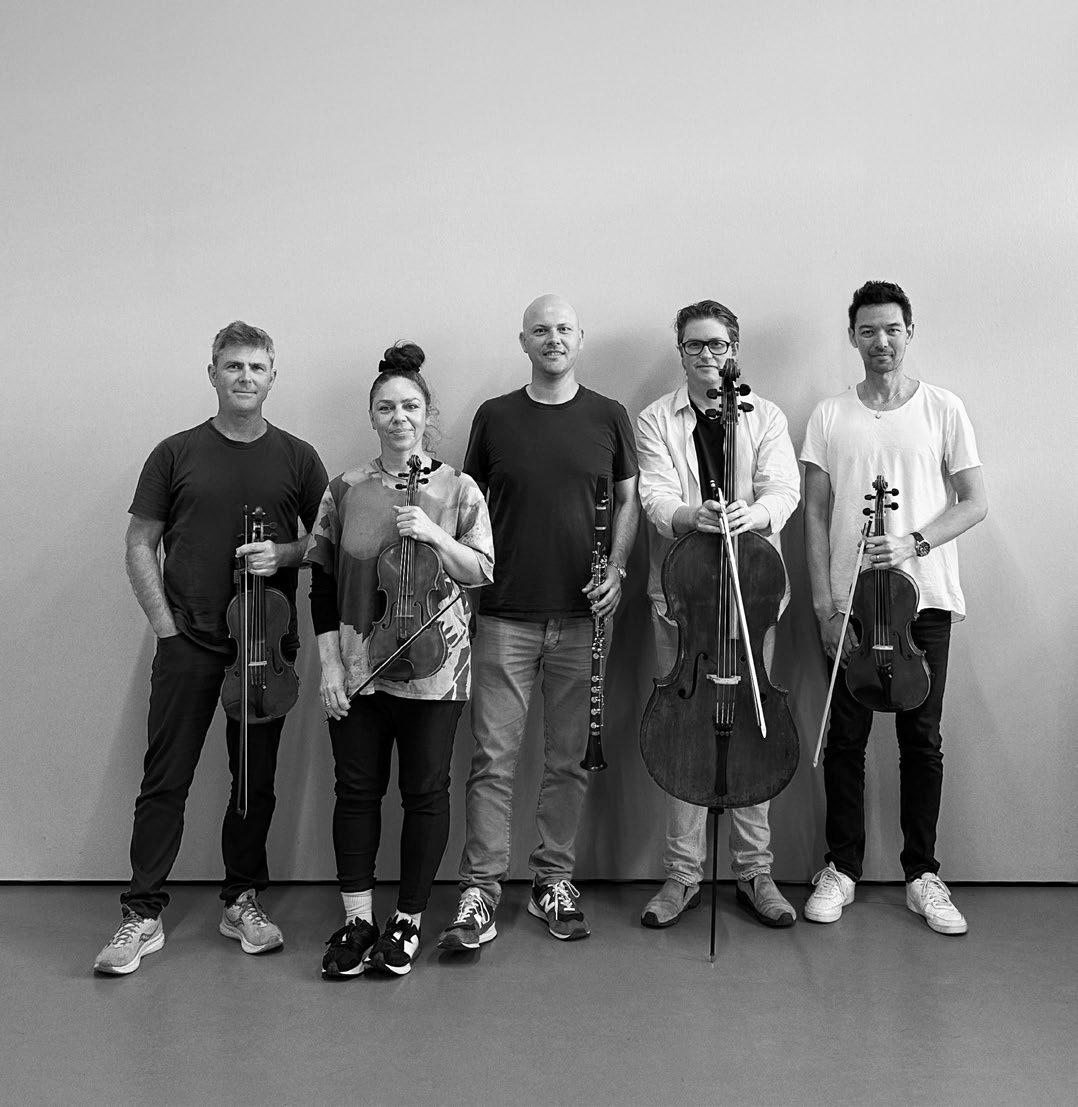
Born in Brisbane, Stephen is a Nunukal/ Ngugi Man of Qandamooka Peoples and Munaldjali Man of Yugambeh Nation South East Queensland.
From 1991-2023 Stephen was Artistic Director of Bangarra Dance Theatre and has developed a signature body of works that have become milestones in Australian performing arts, culminating over 27 works for the company.
Stephen continues to reinvent First Peoples storytelling within Bangarra, the arts community and through collaborations within the film and TV industry. He directed the Indigenous sections for the 2000 Sydney Olympic Games Opening and Closing Ceremonies and created a new dance work as part of the Gold Coast 2018 Commonwealth Games Opening Ceremony.
Stephen’s most recent works include Wudjang –not the past for 2022 Sydney/Adelaide Festival; Waru – the journey of the small turtle for Bangarra Dance Theatre; Vigil for 2024 Sydney Festival and Baleen Moondjan for 2024 Adelaide Festival. Other works include the Helpmann Award winning work Bennelong in 2017 and the work Dark Emu in 2018, choreographed together with former Bangarra dancers Daniel Riley and Yolande Brown, and which went on to become one of the most successful productions in the history of Bangarra.
Stephen’s first full-length film Spear premiered at the Toronto International Film Festival before screening at various arts festivals around Australia. He has also directed the chapter Sand in the feature film The Turning (2013) and choreographed the feature films Bran Nue Dae (2009) and The Sapphires (2011).
Stephen was the Artistic Director of the Adelaide Festival in 2004 and currently sits on the Adelaide Festival Board.

In 2015, Stephen was awarded an Honorary Doctorate of Creative Arts by the University of Technology Sydney. In 2016, he received both the NAIDOC Lifetime Achievement Award and JC Williamson Award. In 2017, Stephen was honoured with the Australia Council Dance Award for significant contributions to the cultural and artistic fabric of the nation and was appointed an Officer of the Order of Australia (AO). Stephen was awarded the prestigious Red Ochre Award at Australia Council for the Arts’ 2022 First Nations Arts Awards. Also in 2022, Performing Arts Connections (PAC) Australia awarded Stephen the Wendy Blacklock Industry Legend Award to honour his role as an artist and cultural leader, establishing and nurturing contemporary Indigenous dance into a place of prominence across Australia.
A note from the choreographer
I was invited by Rafael Bonachela to choreograph a work for this triple bill, after he had heard and fell in love with the score. He had connected with an initial 20 minute recording of William Barton and Omega Ensemble’s Breath – the gift of life and felt that it was a composition that needed to be explored through dance. After 30 years with Bangarra, I was planning on a small break from dance to build projects in different creative fields, but Sydney Dance Company was where I started my career as a dancer and that circularity felt special to me.
Developing Unugkati Yantatja – one with the other has been a different process for me. Usually, I start with a blank canvas, creating my work from there. We’d start with stories – traditional and contemporary, then build the choreography and score around it. With this project I was brought in when they had some of the ingredients – the score was already set. This was an interesting challenge, and I started working to find my way into the story - what was William, his creative spirit, feeling during the development of the composition?
William talked about his fascination with circular breathing, and how the initial composition was developed with David Rowden, Artistic Director of Omega Ensemble playing two ancient wood instruments – the yidaki and clarinet that both have this practice. We talked about how sacred breath is also such a human necessity. This drove the development of the work for me. We aligned on the genesis of the story, the universality of breath – the inhale and exhale of breath, and
the breath in all things whether its humans, plants, animals, sky, water. This felt like a truth in all cultures, but also so linked to the kinship systems in First Nations storytelling.
I’ve found a really incredible connection with the Sydney Dance Company dancers during the development of this work. There are few companies, globally, that work at such a high standard technically. They have such a unique creative spirit and connect as a clan so well. I really enjoyed bringing the knowledge I have of dance, my distinctive language and William’s story that I’ve been entrusted with, to make something important, with the physical artistry of these incredibly talented dancers.
It was wonderful that I could call upon my creator clan, who I’ve worked with for many years: Jacob Nash for set design, Jennifer Irwin for costume design, and Damian Cooper for lighting. They know the contemporary spirit, and they’re exceptionally creative and good at what they do. It’s great to have them work with me again.
I’m thankful for William who invited me to take care of his composition and to lead this story creatively and to Rafael to invite me to work with the company again.
I hope you enjoy this special creation, Nyanyabuh, Stephen Page
Jacob Nash is an artist, designer, curator and creative director whose work moves between theatre, film, television, fine art and public art — creating powerful visual worlds that speak to the stories, people and Country we all share from a First Nations perspective.
Jacob’s ancestral land on his mother’s side is in the Daly River region, and he also carries Chinese and Scottish heritage. He grew up on Quandamooka Country and has spent the last two decades living and working across the Sydney Basin. His practice is deeply rooted in these places and histories, drawing on them to create images that hold memory, strength and connection.
From 2010 to 2022, Jacob was Head of Design at Bangarra Dance Theatre, where he set designed all of the company’s productions — including Wudjang: Not the Past, Dark Emu, Bennelong, Patyegarang, Lore, Terrain and Blak His visual language has become a defining part of contemporary Australian performance. Beyond the stage, his work extends into television (Cleverman), film (Spear), and major public artworks such as Future Dreaming (Sydney Festival, Barangaroo Headland), Country II (477 Pitt Street, Sydney), and the forthcoming Barangaroo Harbour Park (with Chris Fox).
Jacob’s designs are driven by story — how it lives in place, how it moves through people, and how it continues to shape who we are. Across every medium, his work is an act of remembering, honouring and reimagining.

It’s a privilege to again collaborate with Stephen Page and William Barton — two artists whose work continues to shape how we see and hear Country. Together, we’ve shaped a world that is held by a single form — an object that carries power, culture, and story all at once.
For me, the design begins with that object. It is the vessel — both literal and symbolic. It holds connection, ancestry, the energy of sound and spirit moving through space. Around it, light and movement breathe, echoing the rhythms of William’s music and Stephen’s choreography.
Design, in this context, is not a backdrop — it’s ceremony. Every surface and shadow has been shaped to listen: to Country, to language, to the unseen threads between all of us.
This is what I hope you feel — the act of being held, of witnessing, of coming into ceremony together.
Australian costume designer Jennifer Irwin works across opera, drama, film and in particular dance & ballet.
Jennifer began her design career at Sydney Dance Company in 1982, designing 34 works for the Company. Simultaneously the costume aesthetic for the entire Repertoire for Bangarra Dance Theatre since its inception in 1993-2024.
Other Commissions include over 90 ballets for The Australian Ballet, Royal New Zealand Ballet, Universal Ballet of Korea, Joffrey Ballet, Queensland Ballet, West Australian Ballet, Singapore Ballet, NT Dance, TasDance and ADT among others.
Events include Opening and Closing Ceremonies for the Sydney 2000 Olympic Games, the Official Ceremony marking the Centenary of Australian Federation 2001, Belvoir Theatre Company, Sydney Theatre Company, Opera Australia, Melbourne Theatre Company, Opera WA, Opera SA and Opera Queensland.
Her work has been staged live in over 100 countries, over 450 cities and venues, including the Lincoln Centre NYC, City Centre NYC, Brooklyn Academy of Music NYC, The Kennedy Centre Washington, The Royal Opera House, Covent Garden London, Command performances at the Royal Palace Madrid and many at the Sydney Opera House.
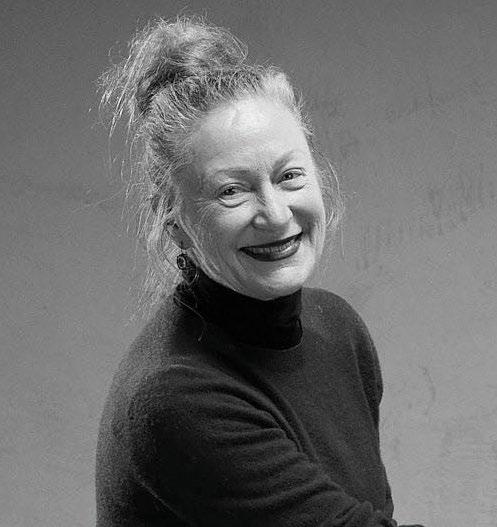
A note from the costume designer Dance is the most wonderful artform to design for!
I began my career in costume design at Sydney Dance Company in 1981 where I met Stephen Page as a young dancer. I have been lucky enough to collaborate on every work since. Together we have developed an unspoken shorthand to create our own visual aesthetic for Bangarra and beyond.
Unungkati Yantatja – one with the other, is about ‘Breath’.
I’ve always been very influenced by fabric and textures and what I can do with different materials to create abstract artworks in their own right.
For Unungkati Yantatja – one with the other I have dyed the fabric and individually hand painted every petal in graded colours creating difference for the individual dancers who can then make them their own and take them on their own journey.
Aim
In this activity, you will be guided through a creative dance task inspired by the themes of Unungkati Yantatja – one with the other. This task is about using your imagination to explore movement and express ideas through dance. You will investigate how natural forces – like the wind – can influence the way you move. Along the way, you will build confidence, creativity, and skills in expressing yourself through movement.
By the end of this task, you will be able to:
• Develop and refine your movement skills.
• Generate original movement ideas.
• Express thoughts, feelings, and emotions through dance.
• Work collaboratively and creatively with others.
• Reflect on your own experiences and the creative process.
Part A: Creative movement task – inspired by the wind
“The continuum of breath is like the wind.” — Stephen Page, Unungkati Yantatja – one with the other
In this task, you will explore the different qualities of wind through creative movement. Think about how wind moves: fast, slow, gentle, strong, swirling, or tumbling. You will use your body to explore direction, force, and flow.
You can use Sydney Dance Company’s Spotify improvisation playlist for music support. Click here to listen to Spotify playlist
Improvising and creating
This activity can be done on the spot or while moving around the room. Use your imagination to explore different types of wind movements:
1. Leaf in the Wind
• Imagine a leaf being carried by a breeze.
• Move your whole body, or just one part (hand, arm, head).
• Experiment with different dynamics:
» Slow, graceful, falling movements.
» Spiraling or swirling motions.
» Quick, tumbling actions.
2. Wind Currents
• Use your torso and arms to draw patterns in the air.
• Explore:
» Gentle breezes
» Rushing gusts
» Swirling forces
• Think about the difference between strong winds and gentle breezes.
• Notice how your body reacts differently to each quality of movement.
Part B: Composition task – creating a phrase
Aim
Using the wind as inspiration, create a short movement phrase that reflects your exploration and stimulus inspired by the wind in Part A.
What is a movement phrase?
A movement phrase is a short sequence of steps, usually about 1–2 minutes long. Naming your phrase can help you remember it.
Individual Phrase
• Task: Create a short sequence of 4–6 movements that show different aspects of wind (e.g., gentle breeze, gusts, whirling, stillness, sudden bursts).
• Focus: Explore how your body can change speed, energy, and direction. Think about light vs. heavy, flowing vs. sharp.
• Challenge: Use at least two body levels (low, medium, high) and show a clear change in dynamics.
Duet Phrase
• Pair up and share your individual wind phrases. Explore how your movements can interact:
» Respond to each other (echo, mirror, contrast).
» Build on each other’s ideas (one starts a gust, the other continues it).
» Explore push/pull, resistance, or “following” each other as if carried by the same wind.
• Focus: Connection, communication, eye contact, and awareness of each other in shared space.
• Challenge: Include at least one moment of contact or near-contact where the “wind” seems to travel between you.
Group Phrase
• Bring duet ideas together into a larger group composition. Use choreographic tools to structure and layer movement:
» Repetition: Repeat gestures to create rhythm.
» Canon: Pass a movement through the group like wind traveling across space.
» Unison: Move together to show a strong gust or storm.
» Space/Time/Energy: Try different formations (circle, line, scattered), vary tempo (slow vs. fast), and shift dynamics (smooth vs. sharp).
• Focus: Collaboration and composition, showing a clear beginning, middle, and end (e.g., stillness → build-up → storm → calm).
• Challenge: Include one unison moment, one canon moment, and one moment where everyone moves differently, showing contrasting energies.
Write down your initial thoughts after watching Continuum and discuss.
You may wish to brainstorm this as a group. Use the questions below to assist with articulating your thoughts and ideas:
• What was your interpretation of Spell and Unungkati Yantatja – one with the other?
• What sections, movements or pieces did you like or dislike, and why? Can you describe these using the elements of dance?
• What feelings or emotions did you experience when watching the works? What specifically about the performance made you feel this way?
• What did the works make you think about?
• What is your interpretation of both the works? Compare and contrast your interpretation of Continuum with someone else’s.
• Did you observe any choreographic tools used throughout the work such as symmetrical and asymmetrical movements, unison, repetition, canon, group formations and changes of directions and levels? How did these impact on your interpretation of the works?
• How did the different aspects (movement, music, set, lighting and costumes) impact your experience?
• What production elements did you see? (Lighting, staging and set design)
This dance appreciation task involves analysing and discussing the Continuum performance. Compare and contrast the two works to allow for a deeper analysis.
This task will highlight the similarities and differences in various aspects such as movement quality, themes, costumes, staging and overall impact.
After observing Spell and Unungkati Yantatja –one with the other, document the features of each work individually, using appropriate dance terminology to describe movement, style, and communication of ideas before bringing the two works together to identify shared or divergent characteristics.

Part A: Use the tables below to compare and contrast the works Spell and Unungkati Yantatja – one with the other
Movement
Qualities: Dynamics (such as sharp, sustained, sudden, lyrical), speed and energy of the work
Elements: Use of space (pathways, levels), body shapes and specific movements (locomotor and nonlocomotor)
Style:
The overall technique and stylistic feature of each dance
Themes and Concepts
Interpretation: How did you interpret the ideas, stories or messages that each work communicates
Production Elements
Costumes:
Style, colour and how they contribute to the overall aesthetic or meaning
Props and Set: Were there any objects or staging used and what do you think their purpose was.
Lighting and Sound: How these elements enhance the mood and narrative.
Choreographic Intention
Intention: How effective were each of the choreographer’s intentions for their work communicated throughout the choreography.
Part B: Using your table above, write an essay or speech that compares and contrasts both works in the Continuum performance
Your essay or speech must include the following elements and use descriptive words in your explanations
• First Impression
• Description
• Interpretation
• Compare and contrast of the works
• Evaluation (informed criticism)
Teaching notes for an essay or speech
1. Describe – what did you see and hear
• Dancers and movement: Note the number of dancers in Spell and Unungkati Yantatja – one with the other, their costumes and the style of the movement. Is the movement quality different in each of the works? What makes the movement and choreography different?
• Choreography and structure: Observe the patterns, shapes, formations and overall structure of both works.
• Music and sound: Describe the music, the use of sound – the difference between live musical accompaniment and pre-recorded music and how it relates to both works.
• Visuals: Detail the different sets, props and lighting design and their visual impact on the Continuum performance
• Atmosphere: Comment on the overall environment and atmosphere the performance created.
2. Analyse – what does it mean
• Interpretation: Try to understand what story or meaning the choreography and movement suggest in Spell and Unungkati Yantatja – one with the other
• Technique and Expression: Analyse the technical skills of the dancers and how their emotions and expression are conveyed. Are they different or the same in both works?
• Relationships: Consider how the dancers interact with each other and the stage.
• Elements: Analyse how all the different elements (movement, music and design) work together to create the overall piece.
3. Compare and contrast of the works
When comparing and contrasting Spell and Unungkati Yantatja – one with the other, look at both the similarities and differences between them. This might include the style of dance, the choreographer’s intent, the movement qualities, use of space, music, costumes, and themes. Comparing helps to identify what the works share, while contrasting highlights how they are unique. This process deepens your understanding of both the works and shows how different artistic choices create meaning.
4. Evaluate – how effective was the performance to you
• Artistic Merit: Justify your opinion on the artistic quality of both the works.
• Emotional Impact: Explain how the Continuum performance made you feel and the impression it left
• Effectiveness: Evaluate if the dancers, choreography and design successfully conveyed the message or theme of Spell and Unungkati Yantatja – one with the other
• Personal Perspective: Reflect on the overall experience and what you learned or took away from the Continuum performance.

Using your notes from the Reflective and/or Compare and Contrast Table, write a formal review of Continuum.
A review is not just a description – it is your informed opinion, supported by evidence from the performance.
You can present your review in a newspaper or online article.
Choose a format that best suits your writing style and where your review would be published (for example. Sydney Morning Herald, Dance Australia, School Magazine, or Arts Blog).
Example of a review: www.danceaustralia.com. au/reviews/review-sdc-momenta
Inclusions for the review:
• Engaging headline
• Hook in the introduction
• Conversational but professional tone
• Short paragraphs with clear opinions
www.spiritgallery.com.au/yidaki-information
www.qcaa.qld.edu.au/about/k-12-policies/aboriginal-torres-strait-islanderperspectives/resources/storytelling
www.kalkadoonpbc.com.au/about-us/who-we-are
Discover our suite of Digital Resource Packs




